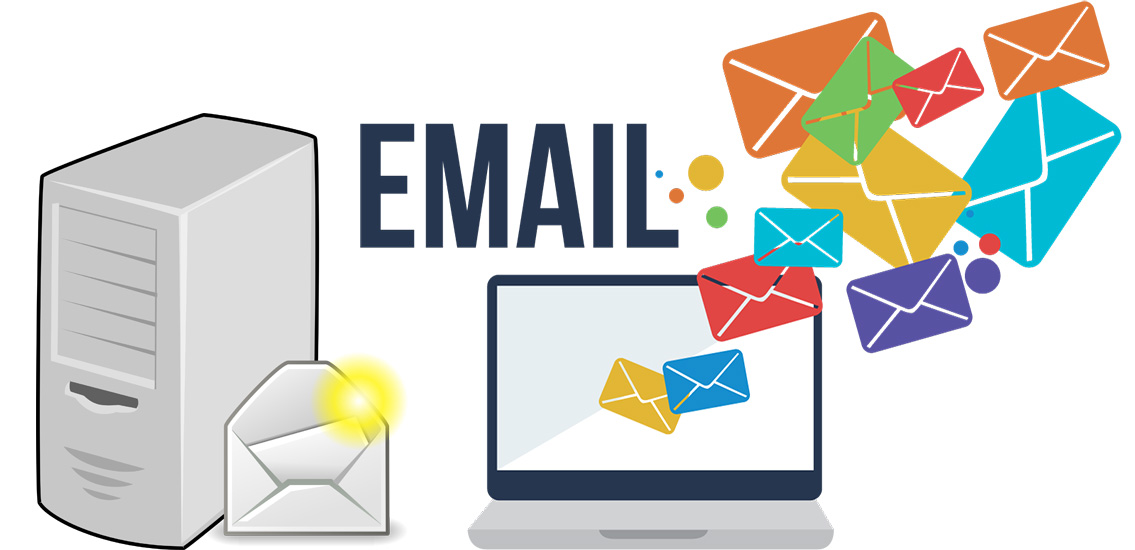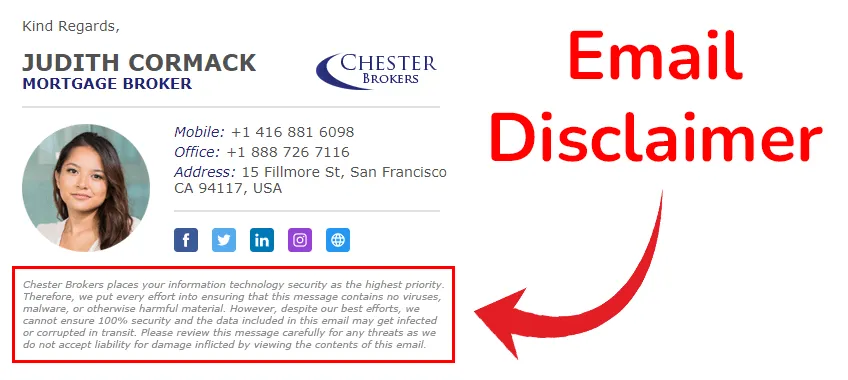
Written by Venturz Editorial Team, Marekting Experts
Category: Marketing and sales

Crafting an effective email body is like preparing a delicious dish – you need the right ingredients, a touch of creativity, and a dash of finesse.
As a chef combines flavors to tantalize taste buds, you'll blend words and elements to engage readers.
Get ready to dive into the art of email communication that goes beyond mere text,
An "email body" is the main content of an email message. It's where the sender writes their actual message, including text, images, links, and other information intended for the recipient.
Essentially, it's the primary part of the email that is read upon opening, excluding the header and signature.

In the world of emails, the subject line is your chance to shine. It's a compact canvas where you paint intrigue, offer value, or spark curiosity.
Those few words hold the key to whether your email is opened or ignored. Imagine it as your digital first impression – like a billboard on a busy street, it needs to catch attention and leave a memorable mark. Crafting it requires finesse; choose words that captivate, inform, or intrigue.
As emails march into the future, certain traditions persist – and the email header is a classic example. A courteous nod exchanged between sender and recipient sets the tone for the virtual conversation ahead.
Just as a firm handshake signals respect in the physical world, the header performs a similar function in the digital realm.
It introduces you, your organization, and your intentions. It welcomes the reader, signaling that they are not just another recipient but a valued participant in the dialogue about to unfold.
A well-crafted email header can also boost the outreach process especially if you are using SEO link building software or an outreach software, making emails more engaging and valuable.
So, while the world changes around us, the introductory line in the header remains a timeless touch of etiquette.
Once the subject line and header have laid the groundwork, it's time to delve into the email's core – the main information. Think of it as the heart of the matter, beating with purpose and meaning.
Here, you deliver your content, share news, provide updates, or present offers. This is where the reader's attention is focused, absorbing the essence of your message.
To ensure engagement, organize your content with precision. Be concise but not curt, presenting your ideas in a compelling manner that holds the reader's interest.
Just as the heart sustains the body, the main information sustains your email's purpose.
Every conversation, even a digital one, deserves a proper conclusion. Enter the footer – the graceful farewell to your email interaction.
It serves multiple roles – from providing your contact details, ensuring accessibility and company logo, and often housing legal or privacy notices. Think of it as the courteous closing bow to your email performance. It’s a chance to leave a lingering impression, offer a helping hand with further inquiries, and maintain professionalism.
In a sense, the email footer is your last word, one that leaves your recipient with a sense of closure and satisfaction. Just as a parting phrase in a real-world conversation, it signifies the end point of your email journey – until the next one begins.

At the heart of the email body lies the main content. Here, you deliver the core message, whether it's sharing news, presenting an offer, or providing valuable insights.
Just as a book's chapters drive its narrative, the main content is your website's and email's backbone, driving its purpose and connecting with your customers and recipients.

A picture is worth a thousand words, and in the email body, visuals can speak volumes. Incorporating images, infographics, and videos can enhance engagement and clarify complex concepts.
These images, photos, and visuals complement your text, making your message more digestible and memorable.

The opening of the attachment in your email body sets the tone for the conversation. A warm greeting or salutation personalizes the interaction, showing that you value the recipient as an individual.
Addressing the person to them by name adds a personal touch, creating a sense of connection right from the start.

Much like the first chapter of a book, the introduction or lead-in captures your recipient's attention. It provides context, hints at what's to come, and entices them to keep reading.
Craft this section carefully to draw your readers in and make them eager to explore further.

A powerful email doesn't just inform users – it prompts action. The call to action (CTA) in an informal email is your invitation for recipients to take the desired steps, whether it's visiting a website, making a purchase, or signing up for an event.
Make your CTA clear, compelling, and aligned with your message's purpose.

The signature is your digital handshake, a personalized mark that reminds recipients there's a person behind the screen. It typically includes your name, title, and contact information.
A thoughtful signature adds credibility and shows that your email comes from a real individual.

Just as the footer page bids adieu to subscribers of the email, it also provides necessary information. Here, for example, you might include legal disclaimers, privacy policies, and copyright notices.
The footer is the place to address potential legal or compliance requirements, ensuring your communication is transparent and respectful.

In today's interconnected world, social media is a powerful tool for extending your message beyond the confines of email.
Including links to your social media profiles encourages recipients to engage with your organization, company, services, or brand on multiple platforms, fostering a stronger online presence.

Transparency and respect are paramount in email communication. Including an unsubscribe link in email accounts allow recipients to opt out of further emails if they wish.
This choice ensures that your email subscriber list remains engaged with those who genuinely want to hear from you.

Make it easy for recipients who respond to get in touch with you. Providing contact information, such as a phone number or email address, shows that you're open to dialogue and encourages recipients to reach out with questions, feedback, or inquiries.

Crafting an email body that captivates, informs, and compels action is an art that combines strategy, empathy, and clear communication.
To master this craft, follow these essential steps:
Every email you send should have a clear purpose. Are you sharing information, making an announcement or request, or seeking a response?
Define your objective upfront – it will guide your content and ensure your message stays on track.
Understanding your recipients is key to resonating with them. Consider their preferences, needs, and pain points. Tailoring your email to their interests increases the chances of grabbing their attention and sparking engagement.
Your subject line is the invitation to your email party. It should be intriguing, informative, and aligned with your email's content. A well-crafted subject line entices recipients to open the email and sets the stage for what's to come. A strong subject gets the open and sets the stage for the message; for ready-to-use B2B email templates.
The opening sets the tone for the entire email. A professional greeting, addressed to the recipient by name, shows respect and establishes rapport. A warm welcome fosters a positive atmosphere for communication.
A cluttered email overwhelms readers. Keep your content concise and organized. Use paragraphs, headings, and bullet points to break up text and guide readers through your email message smoothly.
Incorporate personal touches that resonate with the recipient. Mention past interactions, acknowledge recent achievements, or refer to other channels with shared interests. This makes the email feel more genuine and establishes a stronger connection.
Busy recipients appreciate clarity. Use bold text or bullet points to highlight the main points or actions you want them to take. Make it easy for them to identify key information at a glance.
The tone of your email sets the mood. Whether it's formal, casual, or friendly, ensure your tone aligns with your audience and the message you're conveying. Also, pay attention to language – be concise, avoid jargon, and use clear, easy-to-understand language.
Conclude your email with a professional sign-off. Whether it's "Best regards," "Sincerely," or another appropriate closing, it's a polite way to wrap up your message. Remember, the ending is the last impression you leave.
Errors can undermine your message's credibility. Proofread your email for spelling, grammar, and formatting mistakes. If you notice any structural issues, use an AI sentence rewriter to refine and reorganize your text. This tool is the best choice for fixing mistakes and improving your writing. An error-free email shows attention to detail and professionalism.
Subject: Request for Meeting
Dear Mr. Smith,
I hope this email finds you in good health. I would like to request a meeting with you to discuss a potential collaboration on the upcoming project, "Project XYZ."
Here are a few details:
**Meeting Date and Time:** I propose that we meet on either Monday, September 20th, at 10:00 AM or Wednesday, September 22nd, at 2:00 PM. Please let me know which option works best for you, or if you have alternative suggestions.
**Meeting Duration:** I anticipate that the meeting will last approximately 45 minutes to an hour.
**Location (if applicable):** We can either meet in person at our office or schedule a virtual meeting via Zoom, depending on your preference.
If there are any specific topics or materials you would like to cover during our meeting, please feel free to share them in advance.
I am enthusiastic about the opportunity to discuss this collaboration further and believe that your insights will be instrumental in its success. Your expertise in project management aligns perfectly with our project's needs.
Thank you for considering my request. If you have any questions or need additional information, please do not hesitate to reach out to me at johndoe@email.com or (123) 456-7890.
I am looking forward to our discussion and the potential to work together.
Best regards,
John Doe
Project Manager
ABC Corporation
johndoe@email.com
(123) 456-7890
Subject: Request for Meeting
Dear [Recipient's Name],
I hope this email finds you well. I would like to request a meeting with you to discuss [briefly mention the topic or purpose of the meeting]. Your insights and expertise in this area would be invaluable, and I believe that our collaboration can bring significant benefits.
Here are a few details:
**Meeting Date and Time:** [Propose a few date and time options]
**Meeting Duration:** [Specify the estimated duration]
**Location (if applicable):** [Specify whether it will be in person or via a specific online platform]
Please let me know your availability for the proposed dates, or if you have alternative suggestions. I am flexible and willing to accommodate your schedule.
Additionally, if there are any specific topics or materials you would like to cover during the meeting, please feel free to share them in advance.
I am looking forward to our discussion and the opportunity to work together. Your expertise is highly regarded, and I am eager to learn from you.
Thank you for considering my request. If you have any questions or need further information, please do not hesitate to contact me at [Your Email Address] or [Your Phone Number].
Best regards,
[Your Full Name]
[Your Job Title]
[Your Company Name]
[Your Contact Information]
In the digital realm, crafting an email body is akin to crafting a message that resonates beyond screens. Every word, every element, serves a purpose – a purpose to inform, engage, and connect.
With purposeful content, empathy, and attention to detail, your emails can transcend the virtual, making a lasting impact on your recipients.
Writing an email body involves conveying your message clearly and effectively. Start with a concise subject line, then greet the recipient and introduce the purpose.
Organize your content with headings, bullet points, or paragraphs. Highlight key information, provide a call to action, and close with a polite sign-off.
An email consists of five main parts: the subject line, recipient(s), sender, email body, and attachments (if any). Each part plays a role in effective communication, from capturing attention with the subject line to conveying the message in the body and attaching relevant files.
The main parts of an email body are the introduction or lead-in, the introductory line or main content, the call to action (CTA), and the closing or sign-off.
These basic parts or components work together to create a well-structured and engaging email that communicates your message effectively.
The body of a business email contains the main message you want to convey to the recipient. It typically includes relevant information, offers, updates, or requests. Crafting a concise, organized, and professional body is essential to ensure clear communication in a business context.
In the body of an email, write the core message you want to convey. Introduce yourself if necessary, provide context, present information, make requests, or offer assistance. Use a clear and respectful tone, and structure your content for easy reading and comprehension.
The header of an email includes the recipient's and sender's addresses, subject line, and additional details like date and time. The body is the main content area where you write your message. The header provides context for email addresses and messages, and the body conveys the message itself.
The body of the email message is the central content area where you write your message to the recipient. It contains the text, images, links, and any other information you want to convey. The body of the email is where you communicate your purpose, provide details, and engage the reader.
The body of a message is the textual content that conveys the primary information, message, or communication.
The email body is created with the help of the HTML code that marks the text, images, videos, links, and buttons with special tags.
An email typically comprises three main parts: the header, body, and footer. The header includes sender and recipient information, the subject line, and metadata.
The body contains the main message, while the footer may include closing remarks, contact details, and legal information.
The body of the message refers to the main content area of a communication, such as an email, text, or document.
It's the point where the primary information, ideas, or requests are presented to the recipient, providing the core message and context.
A message body is the central part of a communication that contains the primary content, information, or narrative.
In emails, it's where the main message is written, conveying the purpose and details of the communication.
An email address consists of three basic parts only: the first user or recipient's username, the "@" symbol, and the domain name of the mail server or email service provider.
For example, "username@example.com" has these three components.
An email's correct structure includes a subject line, recipient(s), sender, email body, and attachments (if needed).
The subject line captures attention, recipients receive the email, the sender is identified, the body conveys the message, and email bodies and attachments provide additional information and resources.
CC stands for Carbon copy, and BCC stands for blind carbon copy. The recipient's field includes both "cc" and bcc fields.

ABOUT THE AUTHOR
Venturz Editorial Team
The Venturz Editorial Team is a group of experienced creators, product specialists, and business strategists dedicated to empowering entrepreneurs. We publish clear, actionable insights on business setup, growth, marketing, automation, and productivity — helping founders make confident, informed decisions as they build and scale their ventures.
or
Startup Events
Live Chat
